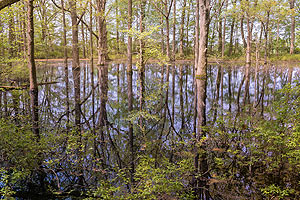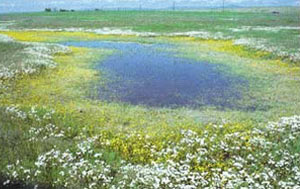Where to Find EPA at WEFTEC 2015
By Ken Kopocis
In just five days, over 20,000 people will arrive in Chicago to participate in the Water Environment Federation’s (WEF) Annual Technical Exhibition and Conference (WEFTEC). WEFTEC is one of the largest conferences and exhibitions in North America for the water sector. I’m really looking forward to attending this year’s conference along with others from EPA. During the five-day long conference, sessions and exhibit booths will showcase water technology innovations and good work in the water arena in the U.S. and internationally. I can’t wait to see what’s in store for this year!
The events listed below are just some highlights of EPA’s involvement in WEFTEC 2015. Please see the full WEFTEC agenda or search the WEF Events App (available through Apple’s App Store or at http://app2.core-apps.com/weftec2015) under WEFTEC 2015 for a complete list of where to find us.
Keynote: Our Acting Deputy Administrator Stan Meiburg will deliver the keynote address on Monday, September 29 at 10:00 a.m. Central Time. His speech will be streamed live online at www.weftec.org.
Policy Session: EPA officials will hold a discussion at the Clean Water Policy Forum on Monday, September 28, from 1:30 – 5:00 p.m. Central Time in Room S402b.
Innovation and Technology: We will have a display at the Spotlight on Technology Innovation in the circular awards display of the Innovation Pavilion. Here you can learn about examples of technology innovation for water resource sustainability and share your own innovations.
EPA Booth: Our staff will be available to discuss agency activities and resources for the water sector in the exhibit hall at booth #4467. New this year, we will be hosting four short speaking events at our booth to address some of the hot topics surrounding water resources:
Monday, September 28
- 10:30 a.m. Innovative Water Financing with Jim Gebhardt
- 11:30 a.m. Water-Energy Nexus with Jason Turgeon
- 2:30 p.m. DOE Resources for Utilities with Scott Hutchins
Tuesday, September 29
- 2:30 p.m. Climate & Water Tools for Adaptation/Resiliency with Michael Shapiro
Social media: During the conference, keep up with EPA information and announcements by following @EPAwater on Twitter and EPA – Water is Worth It on Facebook. Join the full WEFTEC discussion by using #WEFTEC15.
WEF Events App: All EPA events can be found using the WEF Events App by searching “EPA” under WEFTEC 2015. We will also have select documents available download through the app under our booth. Search for “4467” or “U.S. Environmental Protection Agency.”
We look forward to seeing you in Chicago!


 Prairie potholes are a complex of glacially formed wetlands, found from central Iowa through western Minnesota, eastern South Dakota, and North Dakota. Potholes accumulate and retain water, reducing floodwaters and filtering pollution before it goes downstream into nearby streams and rivers. Prairie potholes are also rich habitat for plants and wildlife. In particular they are vital to hunting in America, as they play host to 18 species of waterfowl. They are also are popular for birdwatching, with 96 species of songbirds, 36 species of waterbirds, 17 species of raptors and 5 species of upland game birds.
Prairie potholes are a complex of glacially formed wetlands, found from central Iowa through western Minnesota, eastern South Dakota, and North Dakota. Potholes accumulate and retain water, reducing floodwaters and filtering pollution before it goes downstream into nearby streams and rivers. Prairie potholes are also rich habitat for plants and wildlife. In particular they are vital to hunting in America, as they play host to 18 species of waterfowl. They are also are popular for birdwatching, with 96 species of songbirds, 36 species of waterbirds, 17 species of raptors and 5 species of upland game birds. Carolina and Delmarva bays are ponded wetlands along the Atlantic coastal plain from northern Florida to New Jersey. Carolina bays are most abundant in North Carolina and South Carolina, while those found in the Delmarva Peninsula are commonly referred to as Delmarva bays. Bays typically are close to each other or to streams, and connect to each other and to downstream waters in large rain events. Carolina bays and Delmarva bays filter out nitrogen, which reduces the pollution entering groundwater and flowing downstream. These bays are important nursery grounds for amphibians and reptiles.
Carolina and Delmarva bays are ponded wetlands along the Atlantic coastal plain from northern Florida to New Jersey. Carolina bays are most abundant in North Carolina and South Carolina, while those found in the Delmarva Peninsula are commonly referred to as Delmarva bays. Bays typically are close to each other or to streams, and connect to each other and to downstream waters in large rain events. Carolina bays and Delmarva bays filter out nitrogen, which reduces the pollution entering groundwater and flowing downstream. These bays are important nursery grounds for amphibians and reptiles. Pocosins are evergreen shrub and tree-dominated landscapes that are found from Virginia to northern Florida, but mainly in North Carolina. Typically, there is no standing water present in these peat-accumulating wetlands, but a shallow water table leaves the soil saturated for much of the year. The slow movement of water through pocosins removes nutrient pollution and acidifies the water. This water is slowly released to downstream waters and estuaries, where it helps to maintain the proper salinity, nutrients, and acidity.
Pocosins are evergreen shrub and tree-dominated landscapes that are found from Virginia to northern Florida, but mainly in North Carolina. Typically, there is no standing water present in these peat-accumulating wetlands, but a shallow water table leaves the soil saturated for much of the year. The slow movement of water through pocosins removes nutrient pollution and acidifies the water. This water is slowly released to downstream waters and estuaries, where it helps to maintain the proper salinity, nutrients, and acidity. Vernal pools are shallow, seasonal wetlands that accumulate water during colder, wetter months and gradually dry up during warmer, drier months. In California they typically occur as complexes of pools, connected to each other and to seasonal streams. Vernal pools are rich in biodiversity and wildlife moves between the pool complexes and streams and other downstream waters. With climate change increasing the severity of drought in the West and specifically California, the protection of upstream water resources is even more essential.
Vernal pools are shallow, seasonal wetlands that accumulate water during colder, wetter months and gradually dry up during warmer, drier months. In California they typically occur as complexes of pools, connected to each other and to seasonal streams. Vernal pools are rich in biodiversity and wildlife moves between the pool complexes and streams and other downstream waters. With climate change increasing the severity of drought in the West and specifically California, the protection of upstream water resources is even more essential. Along the Gulf of Mexico from western Louisiana to south Texas, freshwater wetlands occur as a mosaic of depressions, ridges, flats, and mounds on the landscape. Texas coastal prairie wetlands are locally abundant and function together to impact the health of downstream water bodies. Collectively as a complex, Texas coastal prairie wetlands can be connected to each other and contribute flow to downstream waters. Cumulatively, these wetlands control nutrient release levels and rates to downstream waters, as they capture, store, transform, and pulse releases of nutrients to those waters.
Along the Gulf of Mexico from western Louisiana to south Texas, freshwater wetlands occur as a mosaic of depressions, ridges, flats, and mounds on the landscape. Texas coastal prairie wetlands are locally abundant and function together to impact the health of downstream water bodies. Collectively as a complex, Texas coastal prairie wetlands can be connected to each other and contribute flow to downstream waters. Cumulatively, these wetlands control nutrient release levels and rates to downstream waters, as they capture, store, transform, and pulse releases of nutrients to those waters.